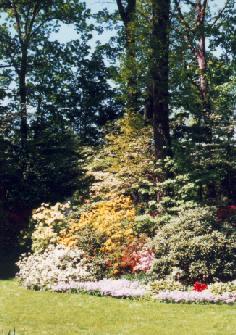 Knap Hill azaleas in my garden |
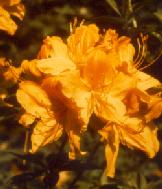 Exbury Azalea: Brightstraw |
There were probably some older Mollis and Ghent hybrids in the collection, but I remember most of all the spectacular Knap Hill and Exbury azalea hybrids which were so spectacular. The Knap Hill hybrid azaleas were developed by Anthony Waterer at the Knap Hill Nursery in England near the turn of the century. The Exbury azaleas, derived from the Knap Hills, were developed by Lionel de Rothschild at the Exbury Estate in England. Both of these beautiful azalea hybrid groups as well as their descendants are now generally referred to as Knap Hill hybrids in honor of the original hybridizing program.
 Knap Hill azaleas in my garden |
 Exbury Azalea: Brightstraw |
The flowers of the Knap Hill hybrids are truly magnificent, often reaching 3 to 4 inches across. They come in brilliant shades of yellow, gold, orange, and red, although some hybrids can be pastel blends of almost any hue from white through lemon yellow, to peach, salmon, and pink. Some of the varieties have brilliant yellow or gold flares in the throat and many of them are extremely fragrant. The plants are very winter hardy, capable of surviving temperatures twenty below zero with no noticeable problems but care must be given during hot dry summers.
Every spring, I would ask my parents to take me to see the azaleas at the Arboretum, and for many years we made the annual pilgrimage. Unfortunately, most of the Knap Hill azaleas have disappeared over the past 40 years due to climatic stress, competition, theft, and disease. However, the memory of the azalea valley has remained with me, and below you will see some images from my garden at the family home where I have been raising and hybridizing Knap Hill azaleas since my college years in the late 1960's.
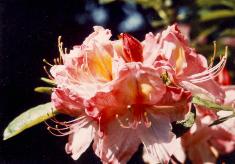
|

|
| Cecile is one of the finest of the pinks. | Marina is an excellent soft yellow. |
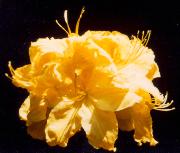
|
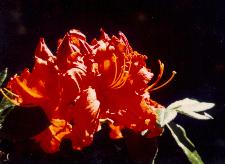
|
| Chetco is one of the better new yellows. | Gibraltar is the standard for brilliance in orange. |
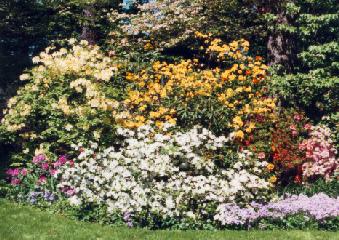
|
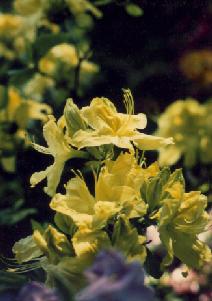
|
|
Marina and yellow Knap Hill seedlings
growing among evergreen azaleas and wildflowers in my garden. |
One of the hybrids I have registered, Yellow Cloud |
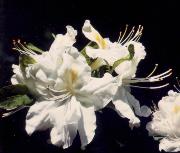
|
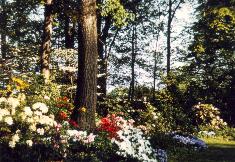
|
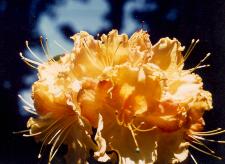
|
| White Knap Hill Seedling |
|
|